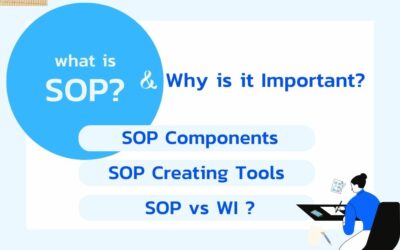
In Thailand, the following contents were announced at the regular conference of the COVID-19 Problem Solving Center (CCSA) held at the end of April 2020.
・ Countermeasures and requests to be continued from May 1st to May 31st
1. Nighttime curfew (from 10:00 pm to 4:00 am in the next morning)
2. Immigration restrictions at all land, air and sea entry points
3. State Quarantine
4. Restrictions on international flights
5. Request movement restrictions across prefectures
6. Request work from home at least 50%
7. Request to refrain from going out to places where people gather
I think many companies in Thailand requested their staff to work at home for the time due to the sudden shift to Work From Home (WFH) from March. As well as in May, the status of this situation remains unchanged, thus we have to follow “6”. Request work from home at least 50%.” I think it will be difficult to “work at home for the time being.”
For the first month, I thought that I could put up with this situation once and work hard when the restriction is lifted in May, but if it continues for another month, the story will change. We need to educate new business procedures to secure sales and run business smoothly during WFH.
This time, I will write about the “education of new business procedures.”
We hired a new administration staff on March 11th. She is the 6th employee of our company. You might think “Why hire a new administration staff for a company with 6 employees?” Since the first administration staff (Ms. G) has been transferred to the Customer Success department.
As I wrote in the previous blog, “Manual for work related to the back-office @ Thailand” I thought that creating work manuals for back-office staff before hiring them is urgent. After a while, I decided to hire a fresh graduate or a junior staff in the administration position and transfer the current staff to her preferred department after improving the administrative work for a year.
Let me explain the background of the current administration staff.
After Ms. G joined the company, I assigned her to create a work manual every time there was a new task.
Of course, she used our service to create a manual, so her knowledge about service will increase because of using it daily. In addition, during the onsite customer service, I got her help when the number of staff was insufficient and let her be the client supporter to respond to the customer’s question.
“Made a lot of manuals myself” is a big advantage because she can answer the customer’s questions that are not just about usage but also operational planning by using her own experience.
While looking at her performance of onsite customer service, I began to feel that it would be wasteful for her to be in charge of only the back office work for the second year, so after discussing with Ms G, I decided to transfer her to the other department. Since our service is a subscription model, the number of customers we need to support increases every year, so continuously hiring the support staff is essential. With this transfer, we managed to solve both “avoiding personalization of back-office work” and “anxiety about acquiring the future onsite customer service staff.”
Now, let’s return to the topic “employee education and handover of back-office work” for the new back-office staff.
A new staff joined the company on Wednesday, March 11th, and WFH started on Tuesday, 17th. When WFH started,we hadn’t done handover of back-office work. Initially, I had a vague idea of how many back-office tasks we can hand over during WFH, but I grasped the complete picture of the back-office work from the list created by Ms.G (please refer to the “GA Working List Sample” mentioned in the blog “Manual for work related to the back-office @ Thailand”).
There were 52 work manuals related to the back-office on the list (daily updated). This is the first time for a Thailand office to hand over the work to the new staff, so it has been covered widely.
1. Classified between “monthly routine” and “event”
Month Routine: Invoice, Issuance and acknowledgement of receipt, Expense Settlement, etc.
Event: task related in-and-out of people, apply for BOI, apply for VISA, etc.
2. Is the job suitable for “WFH”? Classification into “WFH” and “Office Work”
WFH: work procedures that can be done at home
Office: There is a work procedure that needs to be performed in the office.
Studist (Thailand) back-office work list (SAMPLE)
Column C: Routine “◯” is the monthly routine, Column G: WFH classification
The aggregated results are as follows.

Initially, there were five monthly routine tasks for which the staff had to come to the office. After hearing from the staff, the work that requires the staff to come to the office became only one item (more precisely, this work requires to go to the Revenue Office).
I decided to handle the office tasks by myself that requires toI stamp the company seal, to check and print the document that requires a signature, and to receive the document from outside the company (I usually come to the office by my own transportation and work alone during this time).
Nevertheless my workload has not increased because the back office staff undertakes tasks until just before printing. I only “print out, stamp, and sign” and “scan the created/received documents and share them on Slack.” These procedures are immediately reflected in the manual.
3. Check and mark the task related to salary
We have a policy that employees under the probation period do not handle salaries related tasks, so we classified these tasks clearly. PICs are categorized by the previous administrator (G) and new successor (H).

53 tasks for back office work
① Monthly routine work is 21 tasks.
② WFH related is 20 tasks.
③ 14 tasks excluding salary related tasks must be transferred to WFH. If possible, transfer office work (1 task) to WFH.
④ Event work is 32 tasks.
⑤ WFH is 15 items (should increase more. Detailed unresearched)
⑥ 8 tasks, excluding salaries related tasks, are transferred when it occurs.
This time, I am thinking of ending the probation period of the new staff at the point when she successfully transfers all tasks in ③ to WFH. Based on this target, I will monitor the progress of job transfer.
In addition, I will check the workflow and manual so that the office work related to the event can be fully changed to WFH.
Next blog is about “Execution period”.
Teachme Biz – Visual SOP Management Platform that simplifies paper-based manuals, Work Instruction, Workflow or SOP into images and videos in step by step approach (Visual-based). You can create, edit and manage working procedure by all devices including mobile phone, tablet and PC. No more frustrating on unclear working instructions in your team. Staff-friendly manuals is far more effective and helps the user actually achieve a task.
Popular blogs Right Now!
What is SOP and why is it important?
Have you ever wondered how the famous green coffee shop manages to ensure that the Caramel Coffee...
4 Steps to Begin 5S
Embarking on 5S necessitates a systematic approach, gradually acclimating employees to embrace new...
What’s 5S? Exploring its Purpose and Profound Benefits
The 5S serves as a cornerstone for establishing a conducive work environment, encompassing five...






